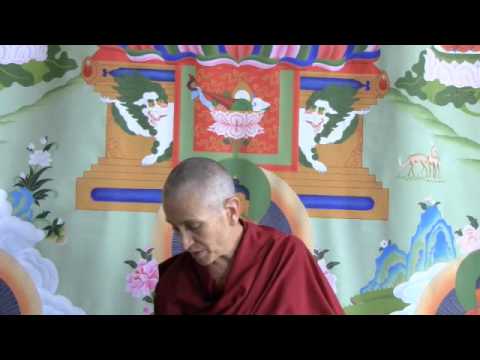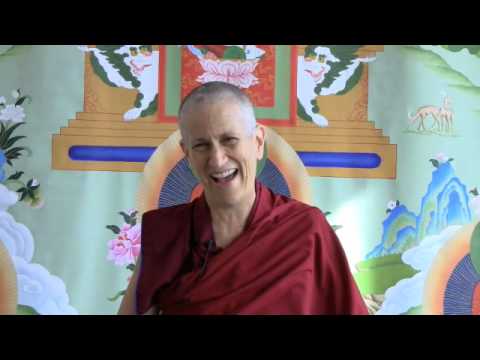Tara’s wisdom
Part of a series of Bodhisattva's Breakfast Corner talks given during the Green Tara Winter Retreat from December 2009 to March 2010.
- Further explanations of the sadhana
- The various kinds of wisdom that Tara has
Green Tara Retreat 011: Tara’s wisdom (download)
Audience: During the Tara practice in the first contemplation, the one that you’re doing in the front generation, the single-pointed concentration is on Tara’s wisdom. How does this contemplation differ from when Tara absorbs in you at the end of the sadhana and you meditate on emptiness then?
Venerable Thubten Chodron: Good question. First of all, during the first contemplation it says to think that you are receiving all of Tara’s wisdom, the different kinds of wisdom that Tara has. Tara has many different kinds of wisdom. They’re not all just the wisdom realizing emptiness. There’s the wisdom realizing impermanence. There are different kinds of wisdom. When we study the six far-reaching practices, they talk about three kinds of wisdom, one knowing the ultimate truth—that’s the one that’s going to know emptiness. Another is knowing the conventional truth—that one knows how causes and conditions function, how karma functions. That one will also know impermanence. That wisdom will know that the nature of samsara is dukkha (suffering). Then the third wisdom is the wisdom that knows how to benefit sentient beings. When you’re doing the first contemplation with Tara in front and the light is coming in and you’re thinking that you’re receiving all of Tara’s wisdom, it’s all these different kinds of wisdom that are coming in. Whereas at the end of the practice when Tara dissolves into you, at that point you’re meditating on emptiness and you yourself are trying to generate the wisdom realizing emptiness at that time.
There’s another slight difference as well. When you’re doing the visualization during the first contemplation, your object of meditation is Tara and the light coming into you, and yourself receiving all of Tara’s wisdom. That whole thing is your object of meditation because you’re really thinking that you’re receiving Tara’s wisdom at that time. Of course that contemplation can lead you into a meditation on emptiness, or on impermanence, or on the wisdom of benefiting sentient beings. But the actual visualization itself at that time, the object of your meditation, is Tara and the light, and you, and that whole process of connection. Whereas when Tara absorbs into you at the end of the sadhana, then you’re really going to meditate on your own emptiness and the emptiness of Tara. So at that time your object of meditation is emptiness. You can go about that meditation on emptiness in any of the various ways that you’ve been taught to meditate on emptiness. For example, the four essential points or the reason of dependent arising, any of these things you can use at that time.
Venerable Thubten Chodron
Venerable Chodron emphasizes the practical application of Buddha’s teachings in our daily lives and is especially skilled at explaining them in ways easily understood and practiced by Westerners. She is well known for her warm, humorous, and lucid teachings. She was ordained as a Buddhist nun in 1977 by Kyabje Ling Rinpoche in Dharamsala, India, and in 1986 she received bhikshuni (full) ordination in Taiwan. Read her full bio.


